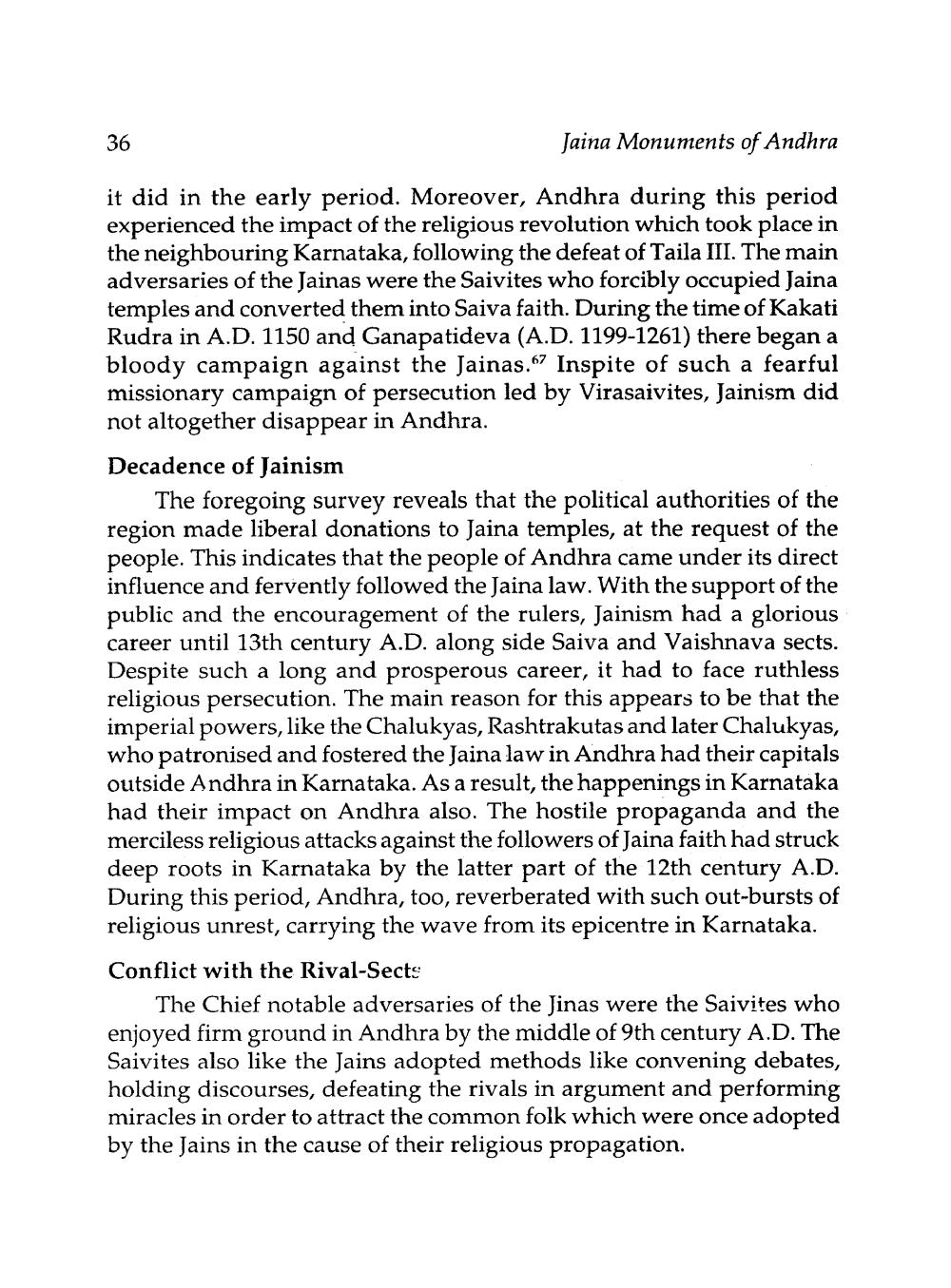________________
36
Jaina Monuments of Andhra
it did in the early period. Moreover, Andhra during this period experienced the impact of the religious revolution which took place in the neighbouring Karnataka, following the defeat of Taila III. The main adversaries of the Jainas were the Saivites who forcibly occupied Jaina temples and converted them into Saiva faith. During the time of Kakati Rudra in A.D. 1150 and Ganapatideva (A.D. 1199-1261) there began a bloody campaign against the Jainas.67 Inspite of such a fearful missionary campaign of persecution led by Virasaivites, Jainism did not altogether disappear in Andhra.
Decadence of Jainism
The foregoing survey reveals that the political authorities of the region made liberal donations to Jaina temples, at the request of the people. This indicates that the people of Andhra came under its direct influence and fervently followed the Jaina law. With the support of the public and the encouragement of the rulers, Jainism had a glorious career until 13th century A.D. along side Saiva and Vaishnava sects. Despite such a long and prosperous career, it had to face ruthless religious persecution. The main reason for this appears to be that the imperial powers, like the Chalukyas, Rashtrakutas and later Chalukyas, who patronised and fostered the Jaina law in Andhra had their capitals outside Andhra in Karnataka. As a result, the happenings in Karnataka had their impact on Andhra also. The hostile propaganda and the merciless religious attacks against the followers of Jaina faith had struck deep roots in Karnataka by the latter part of the 12th century A.D. During this period, Andhra, too, reverberated with such out-bursts of religious unrest, carrying the wave from its epicentre in Karnataka. Conflict with the Rival-Sects
The Chief notable adversaries of the Jinas were the Saivites who enjoyed firm ground in Andhra by the middle of 9th century A.D. The Saivites also like the Jains adopted methods like convening debates, holding discourses, defeating the rivals in argument and performing miracles in order to attract the common folk which were once adopted by the Jains in the cause of their religious propagation.




